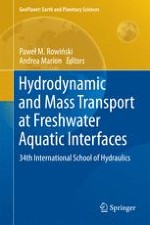2016 | OriginalPaper | Chapter
Feasibility of the Porous Zone Approach to Modelling Vegetation in CFD
Authors : Fred Sonnenwald, Virginia Stovin, Ian Guymer
Published in: Hydrodynamic and Mass Transport at Freshwater Aquatic Interfaces
Publisher: Springer International Publishing
Activate our intelligent search to find suitable subject content or patents.
Select sections of text to find matching patents with Artificial Intelligence. powered by
Select sections of text to find additional relevant content using AI-assisted search. powered by
